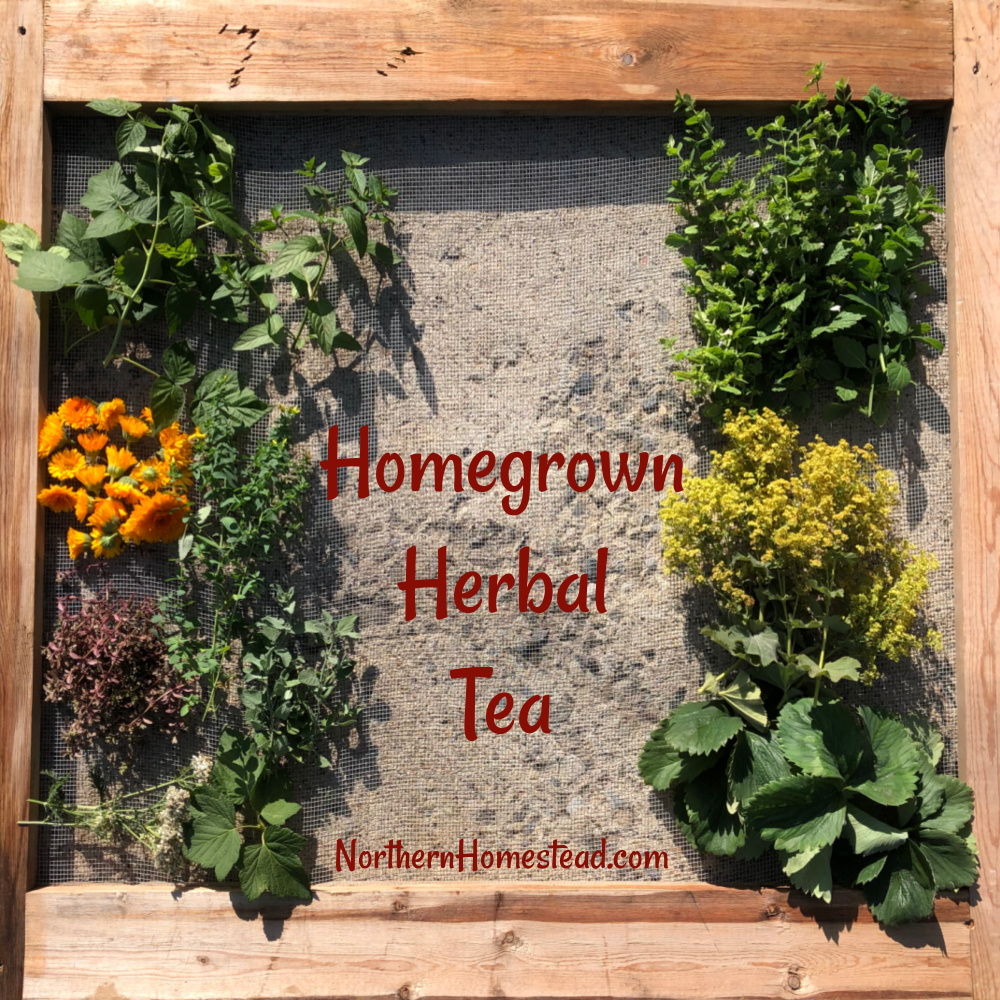
Have a cup of homegrown herbal tea with me. And while we are enjoying its soft aroma, and gentle taste, let me tell you how simple it is to grow, preserve and prepare homegrown herbal tea.
Why homegrown herbal tea
We grow food, not lawn, on our 1/8 acre town lot. Not all plants are edible here, some are just plain beautiful. But among those edible and beautiful plants, we grow many common herbs (and weeds) that are great for herbal tea.
For us, it was more a matter of getting to know the plants that are great for herbal tea, than planting a herbal tea garden. However, if you don’t already have a good amount of those plants, planting an herbal tea garden might be a great idea.
A good organic herbal tea is expensive and worth every penny. However, if growing it is as easy as it is, why spend money on it?!
As you will see below, most of the herbs are either perennials or easily reseed themselves. And some are plain weeds. Also, berry leaves make great herbal teas.
Herbs can also be broadly collected and depending on where you live, it might be a great option. However, to ensure they are not sprayed with unwanted chemicals or peed on, growing them at home in a safe area is your best option.
If you harvest and dry your herbs yourself, they are your herbs. There is something special about that cup of tea that starts with a plant, not a box in a store.
What herbs to choose
I have been wanting to grow my own herbal tea for a while. But since I’m not an herbalist, I was not sure what herbs are suited for a simple everyday tea, and which ones are more remedial herbs and should be handled with care.
A friend gifted me a very practical book: Health through God’s Pharmacy by Maria Treben. I love that book. Among many amazing medicinal herbs, the author shares a simple herbal tea for everyday family use.
The collection of all these herbs starts in spring and continues throughout the summer. Once all the herbs are harvested, they are mixed together into a mixed herbal tea.
Most if not all of these herbs can be used in a separate tea. However, we really enjoy the mixture.
Note: My book is in the original German language, and I translated the names of the herbs to my best ability. If you have an English book use that.
The list also includes little notes on what part of the plant to use and when to harvest if that matters.
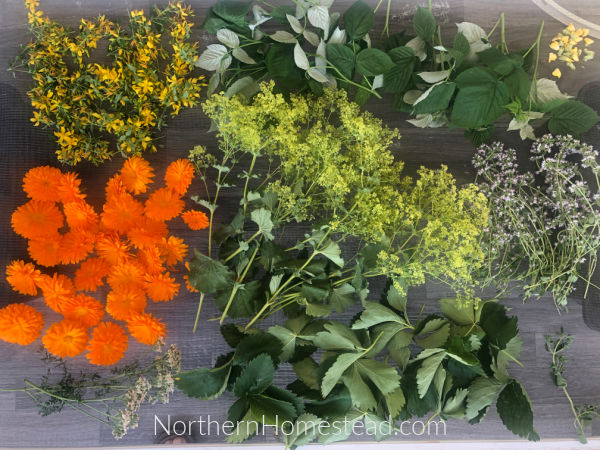
Mixed herbal tea
- coltsfoot (tussilago farfara L.) flower, later leaves
- cowslip (primula veris), heads
- violet (viola), flowers and leaves
- lungworts (Pulmonaria Officinalis) heads
- woodsorrel (Oxalis) flowers
- ground-ivy (Glechoma hederacea), just a little as a spice the top flowerhead
- nettle (Urtica), the first young sprouts in spring
- lady’s mantle (alchemilla), leaves, and flowers
- speedwells (Veronica), flowers, stem, and leaves
- strawberry leaves
- blackberry and raspberry shoots
- elderberry (Sambucus) sprouts, and leaves
- common daisy (Bellis perennis) flower
- lime (Linden) blossom picked in the sun
- German chamomile (Matricaria chamomilla) picked in sunshine
- meadowsweet (Filipendula ulmaria) flowers
- calendula (calendula officinalis) flowers
- woodruff (galium odoratum) flowers, stem, and leaves
- thyme (thymus Vulgaris) flowers, stem, and leaves
- lemon balm (Melissa officinalis) flowers, stem, and leaves
- peppermint/mint (Mentha x Piperita) flowers, stem, and leaves
- yarrows (achillea millefolium) picked in the sunshine, use just a little
- mullein (Verbascum) flowers, picked in the sunshine
- St John’s-wort (hypericum perforatum) flowers picked in sunshine
- oregano (origanum vulgare) flowers and leaves
- hoary willowherb (epilobium parviflorum) flowers, stem, and leaves
- spruce young shoots/buds
- lady’s bedstraw (galium verum) flowers, stem, and leaves
- rose flower leaves
This list is long and gives us a great place to start. Personally, we do not grow all the herbs listed, and I do not think it matters. I just harvest what is there and use that in our mix.
The taste will depend on the herbs you have. Ours is heavy on berry leaves, so the taste is sweet and aromatic.
Other common herbals for tea
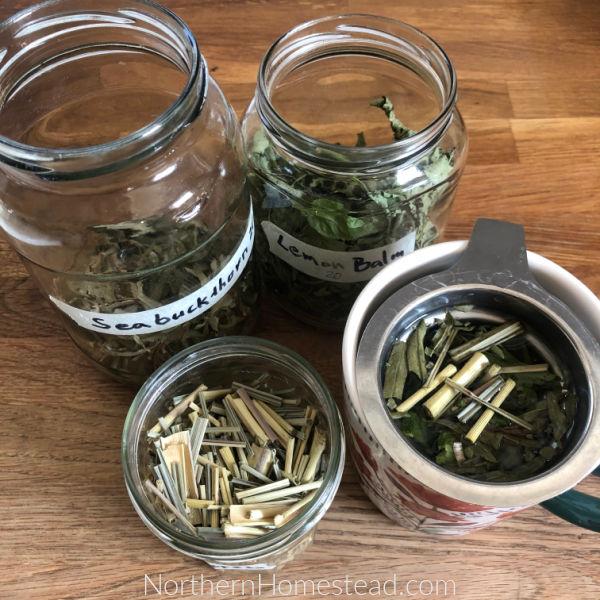
Besides the long list above of herbs that can be used for tea, there are other herbs that grow in our garden and we love.
Seabuckthorn leaves and berries make a calming delicious tea.
Lemongrass tea, consumed occasionally and in small amounts. We grow lemongrass for the thicker stem to use in our favorite vegetable curry recipe. The thinner leaves we dry for tea. I usually mix it with other herbs, for example, lemon balm.
Rose flower leaves and hips make great tea. Even though they are included in the mix, it is worth mentioning them separately, too.
Mint of any kind can be used as a tea, sage, and chocolate mint including. Use separate or in a mixture, whatever appeals to your taste.
Echinacea is another common herb that is growing in the flower garden. Leaves or flowers can be used.
How to grow herbs for tea
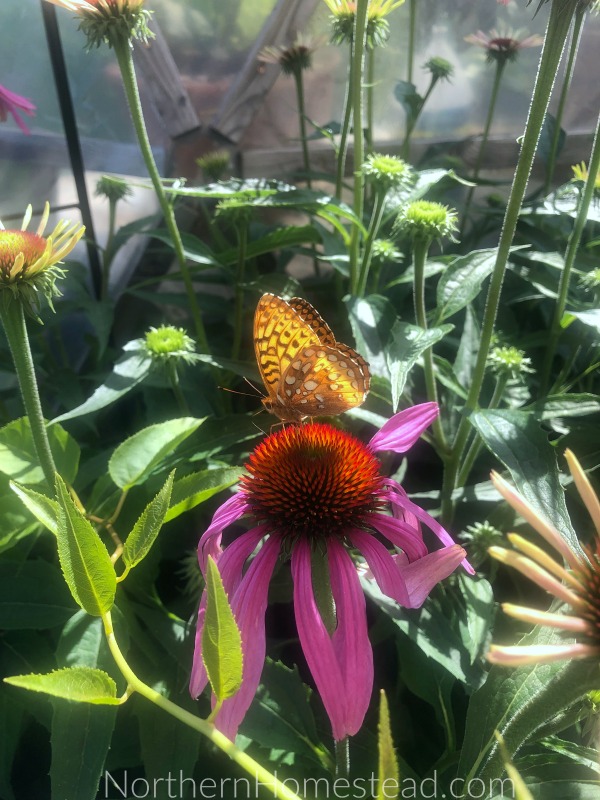
In our garden, the herbs are either part of the flower garden, or the perennial berries and fruit trees.
The flowering herbs like lady’s mantle, St. Johns’s wort, echinacea, etc look good in the flower garden. We grow most of them along our driveway in the perennial flower garden. You can read more about it in our perennial favorites.
Different kinds of mint including lemon balm and also other herbs like thyme are growing under or between the many berries and trees that we grow on our small town lot. The herbs are beneficial for the permaculture garden, the pollinators love them, and this way they don’t need extra growing space.
And herbs that most gardeners consider weeds, get a little bit of grace here and there between garden beds or along the pathways.
Now, if space is not limited as it is in our yard, growing a special dedicated herbal tea garden would be really fun. Choose a sunny location with good drainage. Plant tall plants at the back north/west, of the bed and smaller ones in front of them. The herbs will benefit from the shade in the afternoon and the herbal garden will be an eyecatcher besides being very practical to harvest and enjoy.
Seabuckthorn is a great plant to have in a permaculture garden. It’s a nitrogen fixer as well as a great plant for winter teas. It likes full sun and well-drained soil.
Last but not least do not forget the berries. Raspberries, strawberries, currants, blackberries, and seabuckthorn leaves plus berries make great herbal teas. Most likely you already grow some if not all of them for the berries, but you can also use the leaves or young shoots for teas.
How to preserve herbs for tea
Maria Treben recommends not to wash freshly picked herbs. For that of course you have to know where you pick them. Picking during a sunny day, after a good rain might be a good idea.
Spread the freshly picked herbs thinly on a cloth or paper and air dry quickly in a shaded and well-ventilated area.

Personally, I use dehydrator trays(see picture above) to dry our herbs. If you live in a humid climate, you might want to use a dehydrator with a low-temperature setting.
Fully dry herbs can be stored in a glass container. Tinted green glass is best, or store the clear glass jars in a dark place. 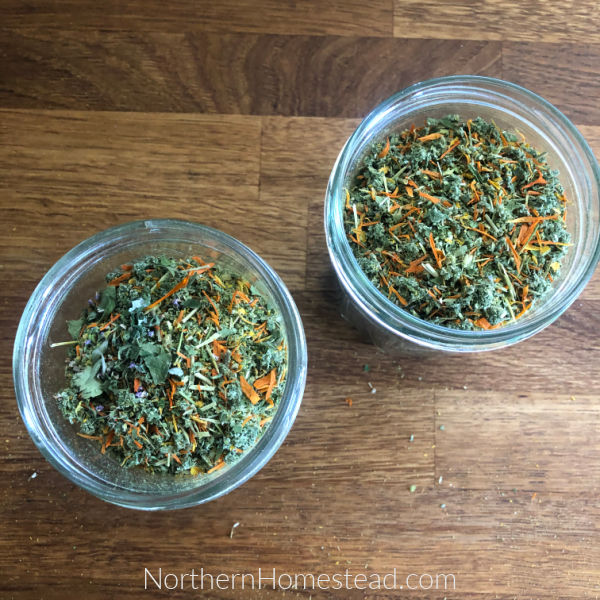
You can leave the leaves and flowers as a whole, this way they will preserve the aroma better, but use up more space. Or for the mixed tea, they can also be chopped in a blender.
Making a homegrown herbal tea
Maria Treben recommends letting fresh herbs steep only for half a minute and dry herbs for 1-2 minutes to have a light herbal tea. She says that a light tea is more wholesome and pleasant to the eye.
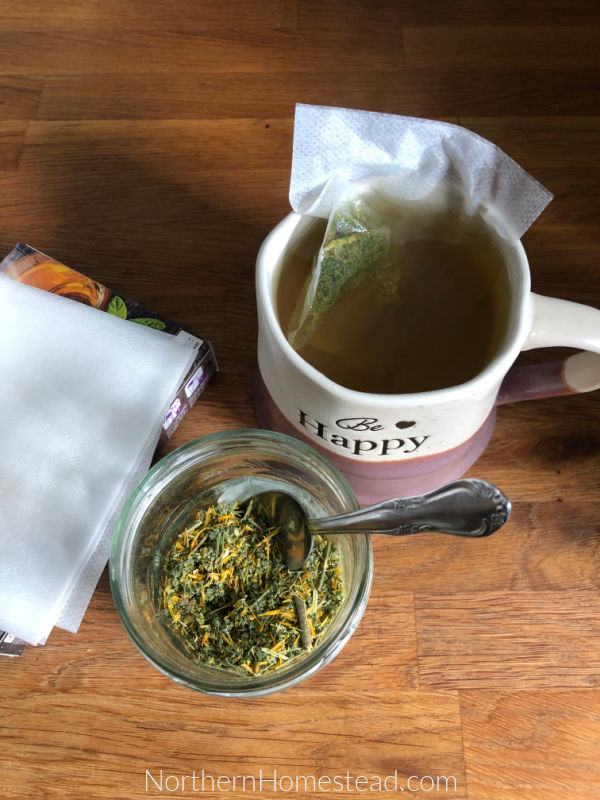
Use a teaspoon of herbs for a cup of tea. A tea steeper or tea filter begs are helpful when preparing a homegrown tea.
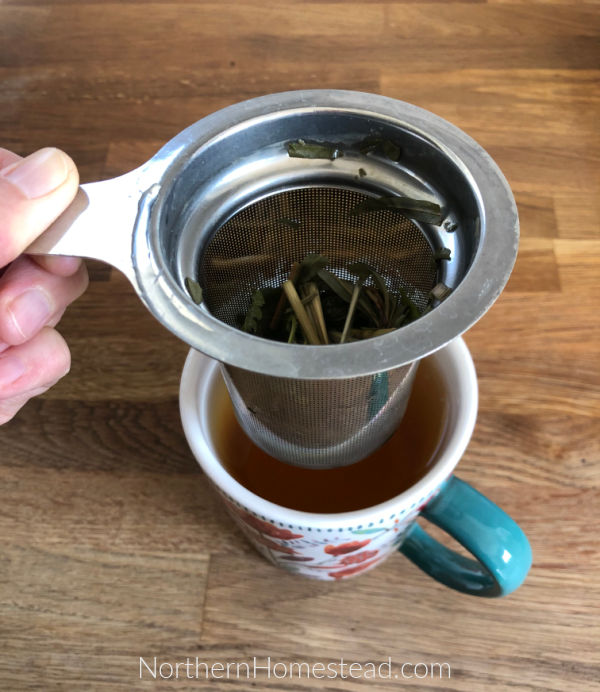
If the leaves or stems are preserved whole, you will need a bit more than a teaspoon. Just eyeball it to be a teaspoon crushed.
Now take the list of the mixed herbal tea outside into your garden and see how many you can find. You might be surprised to see that you are already growing an herbal tea.
What is your favorite herbal tea?
We invite you to subscribe to Northern Homestead and follow us on Instagram, Facebook, or Pinterest for the latest updates.

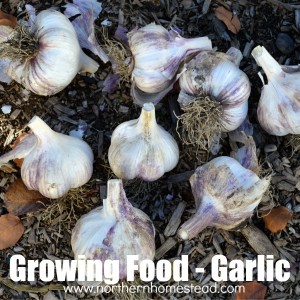
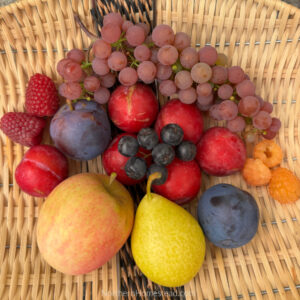
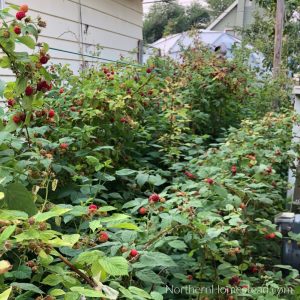



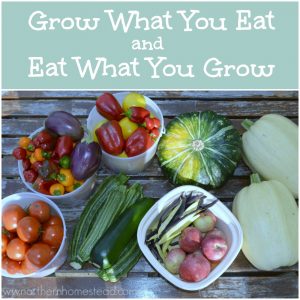
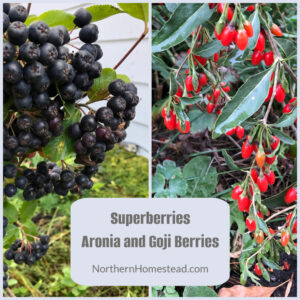
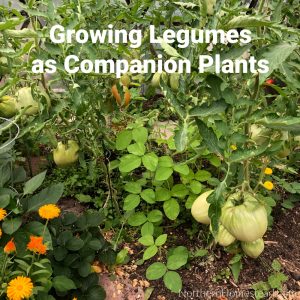
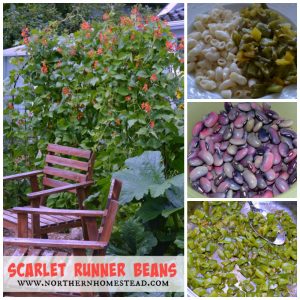

Thank you for sharing this! You’ve inspired me to go see what I can collect for a future brew – I definitely have lemon balm, mint, raspberry and strawberry leaves in my yard.
Those are a great start in a mix or separately.